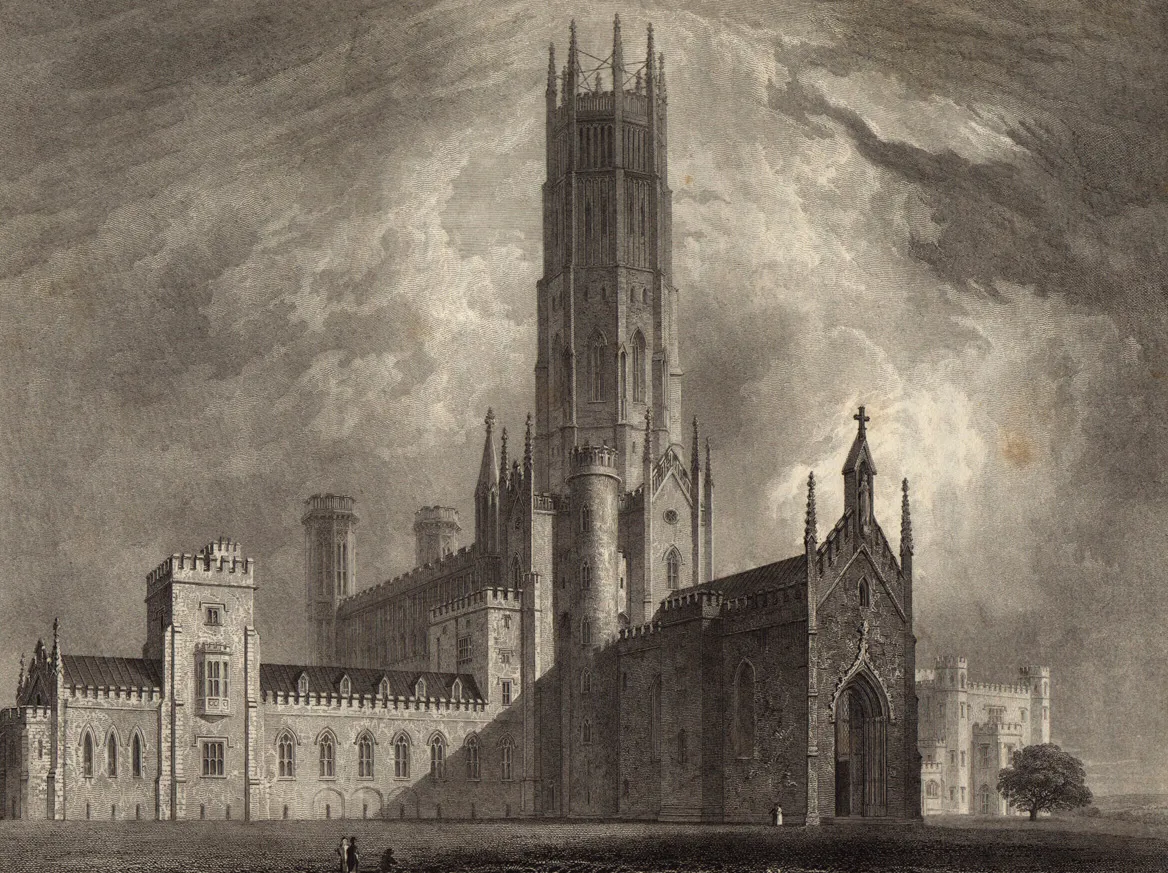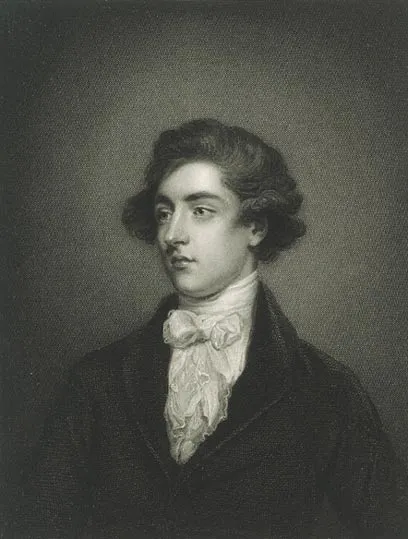
The British are proud of their individualism and sense of humor. Perhaps this explains why there are more eccentric personalities and extraordinary structures in the UK than anywhere else. Seeking their own unique style, gentlemen tuned across the country a lot of architectural wonders. Some of them were conceived as housing for fans of flaming Gothic or antiquity. Others from the very beginning were assigned the role of expensive toys of brick and stone - the construction was started as a joke, but led to a misunderstanding frozen forever above the ground. The greatest of such curiosities and an exceptional in absurdity project is rightfully considered the Fonthill Abbey - the fruit of the heated imagination of William Beckford, who lived in the 18th century.
He was born in 1760 and at the age of ten he received a paternity inheritance of one million pounds sterling, giving more than 100 thousand pounds of annual income. At that time it was a fabulous state. However, despite other gifts of fate, including music lessons that Beckford took from a young Wolfgang Amadeus Mozart, he grew up to be a closed person, subject to sharp mood swings and bouts of senseless extravagance. He traveled a lot in Europe and the Middle East, and slept everywhere in his own bed, which he took with him on any road.
In 1795, tired of wandering, a millionaire secluded in the family estate of Somerset Fonthill. Here he gave vent to his eccentric architectural tastes. Back in 1791, Beckford conceived to erect here an unprecedented building, which he himself christened Fonthill Abbey for external resemblance to the monastery, in particular for the tall central tower. Since the end of 1796 construction was already under way. First Beckford ordered to build a small town for builders, and then he settled it with an army of architects, foremen, masons and other craftsmen. In 1800 the building was so advanced that on Christmas he could arrange a reception in honor of such distinguished guests as Admiral Nelson and Sir William Hamilton with his wife.
Beckford forced the workers to work around the clock in several shifts, lighting up the construction site with torchlight at night and giving out an "unlimited amount of booze" to "fight fatigue." It will not be a big exaggeration to say that the "abbey" was erected by people overworked and, in addition, drunk. The result corresponded to the efforts. In 1807 the construction of the "abbey" was completely completed. Beckford swung into his project a quarter of a million pounds, but did not regret a single spent penny: his tower rose by 82 meters and became a worthy competitor to the highest temple in England - Salisbury Cathedral (123 meters). Alas, it was much less durable. The cathedral has been standing for more than seven hundred years, and the tower did not last so many days. The foundation laid in a hurry was weak, and the brickwork with not yet grasped mortar had to take on the weight of heavy slabs and stained-glass windows with lead bindings. In short, the machine soon collapsed. However, Beckford did not embarrass: he again collected his drunk team and ordered to restore everything as before.

This madcap firmly believed: for a man with money there is nothing impossible. Having sworn already in the nearest Christmas to feast in the refectory of his abbey, Beckord set the unbelievable task before the builders. However, the sum of the proposed award sounded inspiring, so the tower again swiftly reached for the sky - all on the same flimsy foundation. Beckford kept his vow. On Christmas morning, together with the guests, he appeared in the newly refurbished refectory, where the guests from the heart enjoyed a sumptuous lunch for 12 people. They stayed longer behind the claret and stuffed quails, hundreds of tons of stone, bricks, lead and logs would have collapsed on their heads. As soon as the co-workers went out into the fresh air, and the servants began to clean the table, as the walls vibrated. Fortunately, everyone managed to jump out before they collapsed.
It is unlikely that Beckford would agree that his tower is an empty whim. He did not consider himself an extravagant spender. He just has a specific taste. Which, by the way, appeared in the selection of residents for unusual construction. Together with the owner three dogs were settled in the "abbey" (Carolina, Nephew and Lord Fartlebury), an Italian dwarf who ate only mushrooms, and several servants with strange nicknames like the Doll and the Calf.
Knowing that the neighbors did not approve of his original taste, Beckford surrounded the Fonthill Abbey with a fortified wall of 11 kilometers in length and 3.6 meters in height, along the ridge of which sharp spikes protruded. The territory was patrolled by armed guards with ferocious dogs. Beckford did not tolerate the common people, annoying him with requests for alms. Usually he attacked the poor and from the heart he whipped them with whips. However, then as a compensation the victim received one, and even two gold. Instead of doing sports, Beckford liked to arrange a frenzied night jump over his lands, after which, without undressing, he threw himself into a pond overgrown with duckweed. The occasional witnesses of these unusual rituals were sure that the mysterious rider was a descendant from the underworld. One day a solitary traveler knocked on the door of the abbey. Beckford treated him to dinner, and, with the onset of darkness, sent on all four sides, ordering the dogs to be lowered. Fleeing from them, the wretched man sat on the tree till the morning.
The financial position of Beckford was greatly shaken when his West Indian possessions ceased to make a profit. He had to sell Fonthill Abbey to the Indian merchant Farquhar for a third of a million pounds. Two years later, in 1825, the tall central tower again collapsed. The shock wave was powerful, as from a bomb explosion - Farquhar flew 9 meters along the corridor. The rising cloud of dust eclipsed the sun within a radius of several kilometers. Beckford probably would have been amused by the panic that has begun. Now the pathetic remnants of his architectural caprice say little about the eccentric tastes of this strange man. However, they should be preserved as a warning to negligent builders, and most importantly - to all those who do not know where to put money.